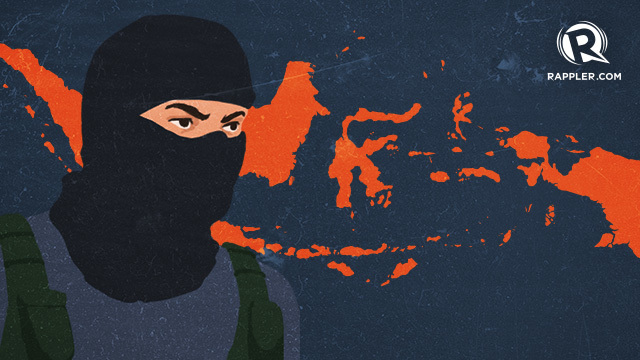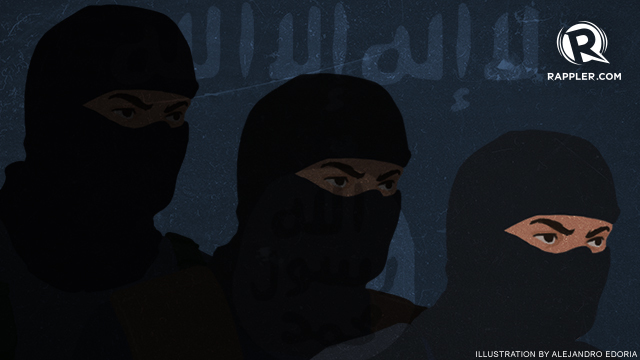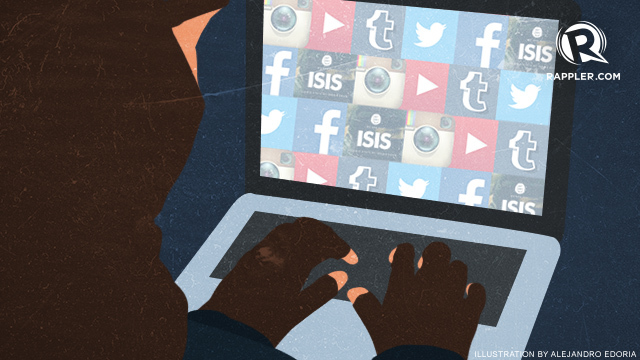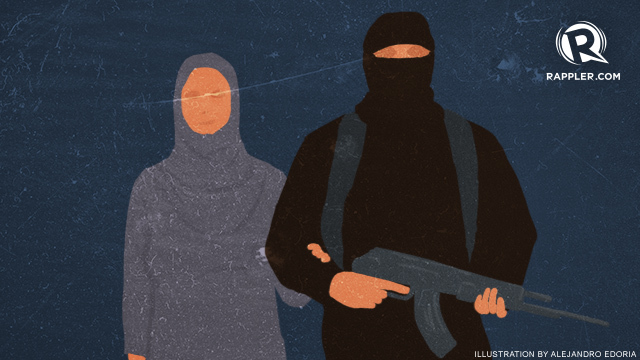The threat posed by ISIS in Southeast Asia is comparatively small, but real, and it has the potential to become larger if not addressed properly. ISIS reinvigorated existing terror networks in the region.

It’s been a thought-provoking week for governments around the world in analyzing and crafting an ISIS response.
ISIS, also known as the Islamic State, IS, ISIL and Da’esch, a loose Arabic acronym, is the latest incarnation of a virulent ideology behind al-Qaeda, forged in the crucible of a proxy war in Afghanistan in the late 80s.
Except this al-Qaeda offshoot is far more successful than its parent ever was, capturing land roughly the size of Great Britain and holding that as a beacon for all who want to create an Islamic caliphate around the world. Perhaps the wealthiest terrorist organization globally, ISIS is partly powered by oil fields it seized that bring in up to $40 million a month, according to US Treasury estimates.
Last Friday, November 20, a noise barrage commemorated the one-week anniversary of the Paris attacks on November 13, which killed 130 people. Claimed by ISIS, armed gunmen and suicide bombers in 6 different places in Paris escalated the war, signaling the possibility of ISIS central coordination for what the West dismissed as lone wolf attacks.
“France will play an enhanced role in international efforts to stabilize conflict zones from Syria, Iraq, Libya and other Middle Eastern and African conflict arenas,” Rohan Gunaratna, head of the International Centre for Political Violence & Terrorist Research in Singapore, told Rappler.
On Tuesday, November 17, Russia announced that a bomb brought down its passenger jet over Egypt last month, killing all 224 people on board, an attack also claimed by ISIS. That was followed shortly after by another attack, also claimed by ISIS, in a busy market place in Beirut, Lebanon that killed 43.
In retaliation, Russia and France, along with the US-led alliance, pounded ISIS territory with airstrikes last week. From leaders’ summits around the world - the G-20 in Turkey, APEC in the Philippines, ASEAN in Malaysia - world leaders called for unity and collective action.
“We strongly condemn all acts, methods, and practices of terrorism in all their forms and manifestations,” said 21 APEC leaders in a declaration on Thursday, November 19. “We will not allow terrorism to threaten the fundamental values that underpin our free and open economies.”
“ISIL is the face of evil,” said US President Barack Obama a few days earlier in Turkey. “Our goal is to degrade and ultimately destroy this barbaric organization.”
Threat in the region is real
Why should Southeast Asia care?
The threat posed by ISIS in Southeast Asia is comparatively small, but real, and it has the potential to become larger if not addressed properly. It’s clear that ISIS reinvigorated existing terror networks in the region.
[Read: ISIS’ global ambitions and plans for Southeast Asia]
“We are ever vigilant against a threat that is very real in our region,” said Malaysia’s Prime Minister Najib Razak to open the ASEAN summit on November 21. “Local militants and groups such as Abu Sayyaf have sworn allegiance to the so-called Islamic State. It was they who cruelly murdered our countryman Bernard Then on Tuesday” – referring to the beheading of a Malaysian hostage in the Philippines last week.
“A military solution alone will not be enough to defeat those who want to cause war,” Najib added. “It is the ideology propagated by these extremists that is the cause of this sadistic violence. We must not lose sight of the fact that the ideology itself must be exposed as the lie that it is, and vanquished for it is not Islamic. It cannot be.”
An estimated 600 to 800 Southeast Asians, including women and children, have traveled to Iraq and Syria, and the first wave has already returned home to Malaysia and Indonesia.
"Southeast Asia is a key recruitment center for ISIS," said Singapore's Prime Minister Lee Hsien Loong last May.
The center is Indonesia, the world’s 3rd largest democracy with more than 250 million people, the lynchpin of Southeast Asia. It also has the world’s largest Muslim population and has suffered the deadliest terrorist attacks in the region since the Bali bombings in 2002. They were carried out by Jemaah Islamiyah and its offshoot groups, homegrown terrorists with funding, training and inspiration from al-Qaeda. Its latest incarnation is ISIS.
Here are 4 things you need to know about ISIS in Indonesia.
1. Don't look at the names. Look at the ideology.
By August, 2014, there were enough Indonesians and Malaysians to form a company of Bahasa-speaking fighters in ISIS, Katibah Nusantara.
Like 9/11 in the West, the Bali bombings in 2002 exposed the Jemaah Islamiyah (JI) terror network, largely led by Indonesians and which carried out attacks in Indonesia. That was the beginning of the end, and authorities broke up the network – by killing or arresting the central leadership. Still, the ideology continued to spread in a myriad of splinter groups with an alphabet soup of names.
A JI splinter beheaded three Christian schoolgirls in 2006 to try to provoke a new round of sectarian violence. Although that failed, this group evolved into the Mujihideen Indonesia Timur (MIT), perhaps the most lethal of JI offshoots. Its leader, Santoso, pledged loyalty to ISIS in 2014 and may, perhaps, have the most direct links to Syria.
JI’s spiritual leader and co-founder, Abu Bakar Ba’asyir, broke off and founded another group, Jemaah Ansharut Tauhid or JAT. From prison, he pledged loyalty to ISIS, and in mid-2014, JAT protested, carrying ISIS flags.
The first Indonesian jihadist to die in Syria, for example, went to school in the notorious Pondok Ngruki, founded by Ba’asyir, the school of many of the Bali 2002 bombers.
At least 16 out of 26 of the 2002 Bali bombers either attended or were associated with one of the three JI-linked schools: Al-Mukmin in Pondok Ngruki, Lukmanul Hakim in Malaysia, and Al-Islam in East Java. Association with Lukmanul Hakim “increases the probability by more than 23% that a jihadi will play a major role in an attack.”
This is how the ideology spreads in the physical world, through family and friends. Like a medical contagion, it is like a virus that spreads under the surface until it hits a tipping point and takes over a community.
“They work underground even though we hit them hard,” Indonesian president Susilo Bambang Yudhoyono told me in 2011 for my book, From Bin Laden to Facebook.
“They have the capability to consolidate, to reorganize, and try to find the opportunity to strike us again. There are many smaller organizations. There are many branches that developed, but actually the mainstream remains. Al-Qaeda is the big brother.”
The names may change, but the social networks and virulent ideology remain the same and continue to evolve, supercharged with the advent of smartphones and social media.
The spread of the ideology, what I called the jihadi virus, is limited in the physical world, but think of social media as your family and friends without limitations of time and space: it's your physical social network on steroids.
2. ISIS is a master at social media and is now moving to chat apps.
Indonesians sympathetic to ISIS are active on social media, helping broaden the base and speeding up radicalization and recruitment. While some have clear ties to the old JI network, others have no ties at all. ISIS is reaching new demographics.
ISIS central may well be the most skilled organization to use social media for propaganda and radicalization. Its slick video and consistent messaging splintered for different cultures is aimed to capture the interest of marginalized and disenfranchised youth.
Authorities around the world have identified 4 phases of radicalization: agitation – playing on personal vulnerabilities like poverty, trauma, injustice leading to hopelessness and fear; self-identification – peer pressure, group-0think or the urge to belong, gratification; indoctrination – capacity-building, personal assurance; and, violent extremism – action, sacrifice and personal fulfillment.
Through each step of this conversion funnel, the potential recruit becomes increasingly isolated from their families, loosening the bonds that maintain them in society. When those bonds are torn, it’s easy to join ISIS.
There are corresponding steps on social media’s conversion funnel as well, but it nearly always leads to face-to-face recruitment.
[Read: How to fight ISIS on social media]
By mid-2015, however, the Institute for Policy Analysis of Conflict, IPAC, wrote that there was a decline in the use of Facebook, Google Plus and Twitter among Indonesian jihadists. For security reasons, many were switching to WhatsApp, Telegram and Zello.
Outside Indonesia, ISIS is now aggressively hijacking hashtags to work around the more aggressive blocking of Twitter.
[Read: Twitter Terror: How ISIS is using hashtags for propaganda]
The goal is simple: spread the message as far and wide as you can. Once hooked, bring them in to more intimate conversations on encrypted platforms and devices.
3. More women and online marriages for ISIS in Indonesia
Globally, ISIS’ appeal is reaching not just men but more women than in the past. Women have always played a role in the radicalization process, but social media is leveling the playing field.
Marriages have long cemented alliances among jihadi networks, and women played key roles in Jemaah Islamiyah’s plots, from translators to accomplices, but technology is increasing the pace and frequency of women’s involvement as well as a new practice of online marriages.
Indonesian women, drawn to the idea of raising their children in an Islamic state, are joining their husbands and enticing others to come to Syria. Like Siti Khadijah, who began posting about her family’s hijrah, or migration, to Syria. She described “her furnished apartment, monthly stipend, free schooling and healthcare,” triggering questions on her Facebook page from other Indonesians wanting to know how they could go to Syria.
The Institute for Policy Analysis of Conflict also points out there are increasing number of extremist couples, including prisoners and fighters in Syria, who meet on Facebook, get to know each other online, and marry by cell phone video. Like 25-year-old Najma, a domestic worker in Hong Kong, who married Abu Arianto by phone. They first met in person after they were married when Abu Arianto came to Hong Kong on his way to Syria. She joined him in Syria a few months later, pregnant with his child. Unfortunately, he was killed weeks after her arrival.
4. Lone wolf attacks in Indonesia?
Social network analysis, which can also be used to untangle the ties that bind on social media, is the framework I used to analyze the physical social networks that powered Indonesia’s terrorist attacks.
After Bali, Jemaah Islamiyah’s centralized command structure collapsed, and its operational capabilities were degraded after enough hubs in the networks were killed or captured. Essentially, its top and middle rank leaders were gouged out, damaging each network’s ability to carry out sophisticated large-scale operations.
Still, isolated nodes and cells from the old networks remained and continued to spread the ideology – bringing in new recruits in a more haphazard, decentralized pattern.
By 2010 and 2011, smaller, more ad-hoc, less professional cells carried out attacks without central coordination.
Many of these attacks, like a suicide bomber blowing himself up in a police station in 2011 or two terrorists stopping in the middle of the night and killing a lone policeman at a police station, could qualify as lone wolf attacks – although IPAC says there have only been two unsuccessful ones since 2006.
Authorities admit lone wolf attacks are nearly impossible to predict and prevent.
http://www.rappler.com/world/regions/asia-pacific/indonesia/bahasa/englishedition/113708-isis-indonesia-facts-terrorism





No comments:
Post a Comment
Note: Only a member of this blog may post a comment.